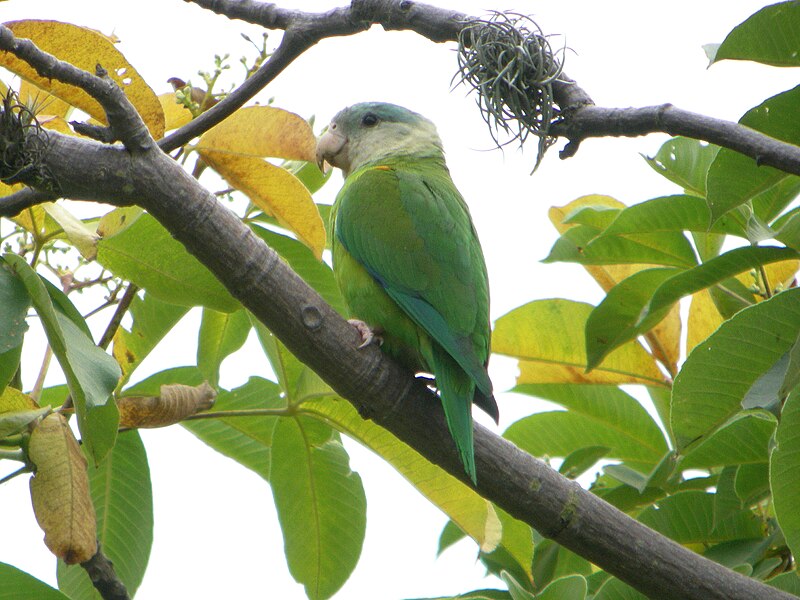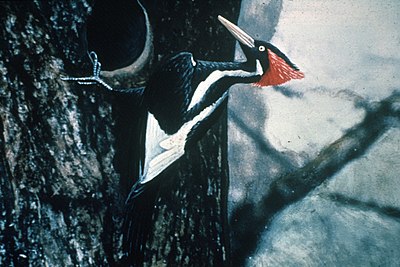 It’s very difficult to choose “bests” among parrots, because both bird and owner personalities and past experiences are so important. Parrots are very complex creatures, and within every species we find an incredible range of individual traits. With that in mind, today I’d like to highlight some parrots that, in general, are good choices for those new to parrot keeping and without the space needed for large species. I’ve chosen 5 that are often passed over by those without much experience, but which deserve a closer look. Please check the articles linked below or write in for more detailed information on their care. Read More »
It’s very difficult to choose “bests” among parrots, because both bird and owner personalities and past experiences are so important. Parrots are very complex creatures, and within every species we find an incredible range of individual traits. With that in mind, today I’d like to highlight some parrots that, in general, are good choices for those new to parrot keeping and without the space needed for large species. I’ve chosen 5 that are often passed over by those without much experience, but which deserve a closer look. Please check the articles linked below or write in for more detailed information on their care. Read More »
Category Archives: Field Notes and Observations on Birds
Feed SubscriptionSnowy Owls May Provide Early Indications of Climate Change
 Owls are great favorites of mine, and I’ve had the good fortune to work with and observe many species in both captivity and the wild (please see articles below). One of my most memorable wild owl experiences occurred, surprisingly, in the Bronx, when I was but 6 years old. A huge Snowy Owl perched on the roof of my home for 4 hours, awing me as had nothing else. I quickly learned that Snowy Owls travel south from their Arctic haunts when their primary prey (a small rodent known as the Lemming) is in short supply. Now biologists are finding that the close ties between Lemmings and Snowy Owls may provide important information concerning climate change. Read More »
Owls are great favorites of mine, and I’ve had the good fortune to work with and observe many species in both captivity and the wild (please see articles below). One of my most memorable wild owl experiences occurred, surprisingly, in the Bronx, when I was but 6 years old. A huge Snowy Owl perched on the roof of my home for 4 hours, awing me as had nothing else. I quickly learned that Snowy Owls travel south from their Arctic haunts when their primary prey (a small rodent known as the Lemming) is in short supply. Now biologists are finding that the close ties between Lemmings and Snowy Owls may provide important information concerning climate change. Read More »
New Evidence Proves that the Ivory-Billed Woodpecker is not Extinct
 One of the USA’s most hotly-debated conservation questions seems finally to have been answered. For years, ornithologists have considered the huge Ivory-Billed Woodpecker, Campephilus principalis, to be extinct, but many well-respected biologists continued to report sightings. Down to an estimated 30 birds by the 1930’s, none had been observed for decades despite intensive searches and rewards, including one of $50,000 posted by the Cornell Lab of Ornithology. Recent video and acoustic recordings (Journal of the Acoustical Society of America, please see below), however, seem to establish that this magnificent bird is still with us. Read More »
One of the USA’s most hotly-debated conservation questions seems finally to have been answered. For years, ornithologists have considered the huge Ivory-Billed Woodpecker, Campephilus principalis, to be extinct, but many well-respected biologists continued to report sightings. Down to an estimated 30 birds by the 1930’s, none had been observed for decades despite intensive searches and rewards, including one of $50,000 posted by the Cornell Lab of Ornithology. Recent video and acoustic recordings (Journal of the Acoustical Society of America, please see below), however, seem to establish that this magnificent bird is still with us. Read More »
Birds Behaving Badly – Cockatoos, Ibis, Koels and Miners Try Australians’ Patience
 Australians have a long history of tolerance towards their wild neighbors, and the government has always protected most native animals. However, according to recent news reports, an unlikely assortment of birds has now become adapted to urban life, and it seems that only the birds are happy with the situation. Hard as it may be for non-Australians to imagine, it seems that cockatoos, ibis, honeyeaters and other “exotic beauties” are causing quite a bit of trouble in the cities they have adopted as homes.
Australians have a long history of tolerance towards their wild neighbors, and the government has always protected most native animals. However, according to recent news reports, an unlikely assortment of birds has now become adapted to urban life, and it seems that only the birds are happy with the situation. Hard as it may be for non-Australians to imagine, it seems that cockatoos, ibis, honeyeaters and other “exotic beauties” are causing quite a bit of trouble in the cities they have adopted as homes.
The World’s Most Magnificent Pest?
The Sulphur-Crested Cockatoo, Cacatua galerita, is considered to be the ultimate parrot pet by bird fanciers and the ultimate crop pest by many farmers. Strictly protected by law, cockatoo populations on farms usually exceed those in natural habitats. Now, it seems, the magnificent white birds have discovered city life, and are taking to it with zeal. Read More »
Parrot Conservation – Mexico’s Ban on Wild-Caught Parrots is Working
 Finally, conservationists and bird enthusiasts have some promising news regarding the fate of wild parrots. Mexico’s recently imposed ban on collecting and exporting wild parrots (please see article below) appears to be having its intended effect. Confiscations are at an all-time low, the public is cooperating, and birds in neighboring Guatemala may be benefitting as well.
Finally, conservationists and bird enthusiasts have some promising news regarding the fate of wild parrots. Mexico’s recently imposed ban on collecting and exporting wild parrots (please see article below) appears to be having its intended effect. Confiscations are at an all-time low, the public is cooperating, and birds in neighboring Guatemala may be benefitting as well.
A Bad Year for Smugglers
Despite increased attention to parrot smuggling, last year (2010) saw only 568 parrots confiscated in Mexico…less than any time in the past decade, and down 1/3 from 2009. As Mexico has long been an outlet for birds illegally trapped in neighboring Guatemala, it is believed that the ban is having a positive effect there as well. Read More »
 That Bird Blog – Bird Care and History for Pet Birds
That Bird Blog – Bird Care and History for Pet Birds
